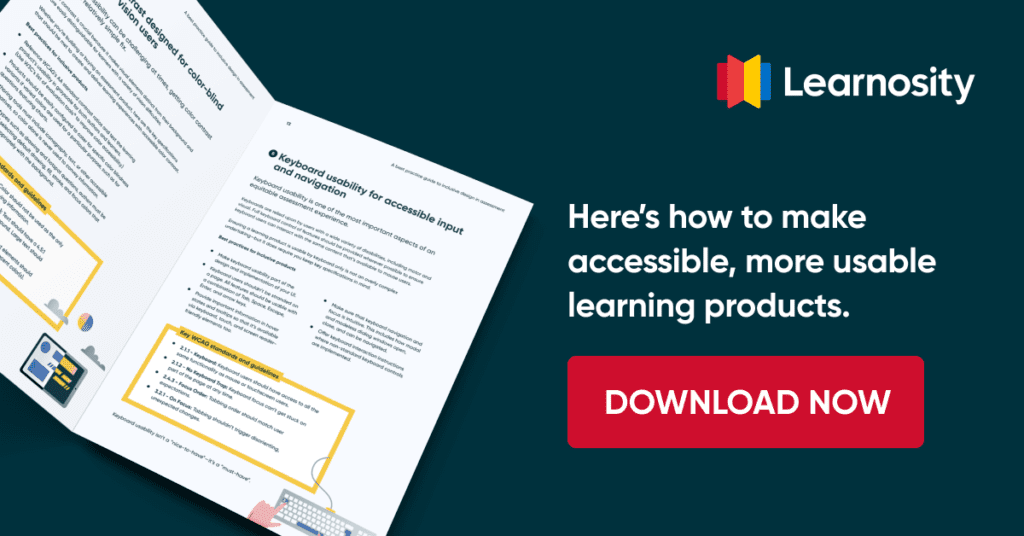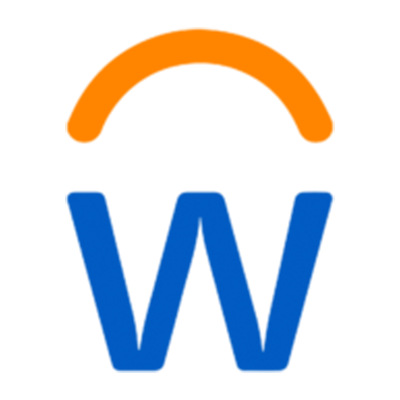Accessibility in education helps create better opportunities for learners
If learning materials are not accessible to learners, then learners’ abilities won’t be accessible to educators.
Education should be challenging for all learners. If it wasn’t, there would be little incentive for students to continuously develop their skills and abilities any further than necessary.
But not all adversity in education is academic in the ordinary sense, nor desirable in any sense.
For over 7 million learners in the US between the ages of 3 and 21, the learning experience poses problems that can’t be as readily overcome by routine study schedules or regular practice tests. The challenges are different because the conditions are different.
These are the students served by the Individuals with Disabilities Education Act (IDEA), which broadly covers some 13 general categories of conditions that adversely affect learning.
According to the National Center for Education Statistics, learners that fit into at least one of these categories account for approximately 15 percent of all public school enrollments – a sizeable portion of the entire student body in the US.
Yet many students and their parents feel that the support they needed during high school was absent, which affects both school performance and post-school opportunities.
Educators share the sentiment, with just 30 percent feeling they could successfully teach children with learning difficulties. As a result, many feel that education is trying to fit square pegs into round holes.
This is worrying considering the harmful effect that a lack of understanding could have on a learner’s education. All students process and respond to information differently, but the assumption that those with a learning disability are somehow less capable academically is a fallacy that needs revision.
“For many children with disabilities, they’re capable of far more than their schools give them credit for,” says special education lawyer Kitty Cone in an eye-opening article for the Hechinger Report. While that piece examines a number of individual cases, it presents evidence of inadequacy in the education system that goes beyond the anecdotal. One attention-grabbing fact is that just 65 percent of special education students in the US graduate on time in comparison with an on-time graduation rate of 83 percent for US students overall.
The knock-on effects of inaccessibility in education
The obvious casualty of the reported failures is that of opportunity. Not only are students with a learning disability less likely to complete postsecondary education, they are also less likely to attain employment than those without a learning disability.
In fact, just 46 percent of working-age adults report being employed compared to 71 percent of adults without a learning disability. Furthermore, of those in employment, a large majority (67 percent) earned $25,000 or less per year within eight years of leaving high school. The median salary for high school graduates is $30,500.
Yet the impact of an inadequate education system on the lives of students with special needs goes beyond the academic or economic. Another devastating by-product is social its social effect.
A negative school experience will not only influence a learner’s self-perception but their outlook on how others might perceive their condition too. This may help explain why just under a quarter (24 percent) of young adults with learning disabilities inform postsecondary schools about their learning needs, and why even fewer (19 percent) of those with learning disabilities tell their employers about their condition.
Why is education failing to satisfy students’ needs
Special needs education is an indisputably complex area, which makes it all the more important that it is adequately resourced. But even though up to 40 percent of the “excess cost” of educating students with learning disabilities should, under IDEA, be funded by the federal government, this target has yet to be achieved.
The knock-on effect for school districts is that they must shoulder the burden – if they can afford it. Those who cannot fill the funding gap must make do with teachers who are ill-prepared to meet the needs of students with learning disabilities. This results in special education services that differ widely in quality from one district to the next.
Technology has emerged as a potential solution to some of the complex problems of learner diversity. Share on XBut in an age of rapid digital evolution, technology has emerged as a potential solution to the complex problems of learner diversity. No doubt buoyed by the buzz surrounding “personalized learning”, more schools are implementing technology in order to deliver a better learning experience to their students.
It’s easy to understand why they’d be eager to do so. Educational technology offers a golden opportunity to democratize education and alleviate the drain on overburdened staff. For example, some students with learning disabilities may require more time on tests. Assessment technologies can easily offer educators the chance to determine such individual parameters. In addition, they offer greater scale and speed in terms of both test delivery and marking.
Yet if assessments – and other types of edtech – are not made properly accessible to all learners, their promise of democratization is a false dawn.
The strength of the desire for adequate solutions can be difficult to resist but even more difficult to satisfy.
Another Hechinger Report article describes how new technologies rolled out in a number of schools across the US actually made assessments more difficult for the students they were meant to assist. From color contrast that made content more difficult to read to text-to-speech tools that read too quickly for students to understand, the glitches succeeded only in worsening students’ anxiety in an already stressful test environment.
Accessibility in education technology is fundamentally about good design. Share on XThe fact of the matter is that accessibility in education technology is fundamentally about good design. The needs of the end-user must always be carefully considered. Many products rushed to market in order to meet intense demand are unlikely to have undergone the kind of meticulous design processes that accessibility requires.
Assess a student’s ability, not their disability
Accessibility in education can be viewed as a two-way mirror. On the one hand, learning material must be made more accessible to learners. On the other, learners’ true abilities must be made accessible to educators if their potential is to be fully realized.
There are countless examples of blazing talents that left their mark on the world even though diagnosed with a learning disability or displaying the characteristics of one.
One potent example is Albert Einstein. Despite the insights that his world-changing intellect brought to light, some have suggested it is highly probable he had a learning disability. This is thought to have been the case with Isaac Newton too, one of the Western civilization’s greatest minds. More researchers are also lending credence to the notion that Vincent van Gogh, a master of kinetic color, was himself color blind.
But this is all hindsight. How many unique talents are being disserviced by inadequate resources or inaccessible tools today? How many opportunities to simply lead a better quality of life are left untaken?
How many talents are being failed by inadequate resources or inaccessible tools? Share on XFor many students, past and present, the following account is all too relatable:
“I was unfitted for school work, and though I would often work well for weeks together, I had to give the whole evening to one lesson if I was to know it. My thoughts were a great excitement, but when I tried to do anything with them, it was like trying to pack a balloon in a shed in a high wind. I was always near the bottom of my class and always making excuses…”
It’s now widely believed that the author of the above fragment was dyslexic – a condition that was neither diagnosed during his time in school nor in his life as a poet. In spite of his disability, the invaluable cultural contribution of WB Yeats was finally recognized in December 1923 when he received the Nobel Prize in Literature.
Get your free best-practice guide to inclusive design in assessment 👇












